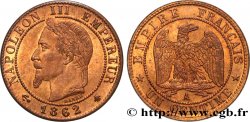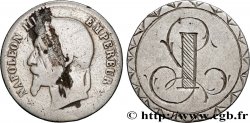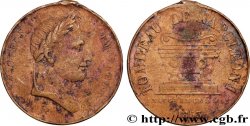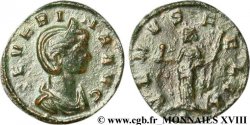fme_1024411 - ZWEITES KAISERREICH Médaille, Inauguration du tombeau de Napoléon Ier
5.00 €
Menge
In den Warenkorb

Type : Médaille, Inauguration du tombeau de Napoléon Ier
Datum: 1853
Name der Münzstätte / Stadt : 75 - Paris
Metall : Messing
Durchmesser : 24 mm
Stempelstellung : 12 h.
Gewicht : 4,21 g.
Rand lisse
Punze : sans poinçon
Kommentare zum Erhaltungszustand:
Patine hétérogène avec une forte usure, coups et rayures. Taches d’oxydation
N° im Nachschlagewerk :
Vorderseite
Titulatur der Vorderseite NAPOLÉON 1.ER - EMPEREUR.
Beschreibung Vorderseite Tête laurée de Napoléon à droite, signé : V.
Rückseite
Titulatur der Rückseite TOMBEAU DE NAPOLÉON 1.ER // INAUGURÉ LE 5 MAI / 1853.
Beschreibung Rückseite Le tombeau de l’Empereur aux Invalides.
Kommentare
Si le tombeau fut inauguré durant le Second empire, il avait été décidé sous Louis-Philippe, avec le retour des cendres. Médaille sans graveur et sans poinçon. Il faut noter que ce jeton a eu un gros succès puisque l’on compte au moins quatre versions de buste, deux sans signature, avec signature C.T. et avec signature VIEUXMAIRE. À noter qu’il existe plusieurs coins de revers dont l’un avec 1 et l’autre avec Ier.
L’hôtel des Invalides est un monument parisien dont la construction fut ordonnée par Louis XIV par l'édit royal du 24 février 1670, pour abriter les invalides de ses armées. Aujourd'hui, il accueille toujours des invalides, mais également la cathédrale Saint-Louis des Invalides, plusieurs musées et une nécropole militaire avec notamment le tombeau de Napoléon Ier. Cet immense complexe architectural, conçu par Libéral Bruand et Jules Hardouin-Mansart, est un des chef-d’œuvres les plus importants de l'architecture classique française..
If the tomb was inaugurated during the Second Empire, it had been decided under Louis-Philippe, with the return of the ashes. Medal without engraver and without hallmark. It should be noted that this token was very successful since there are at least four versions of bust, two without signature, with CT signature and with VIEUXMAIRE signature. Note that there are several reverse dies including one with 1 and the other with I. The Hôtel des Invalides is a Parisian monument whose construction was ordered by Louis XIV by the royal edict of February 24, 1670, to house the invalids of his armies. Today, it still houses invalids, but also the Saint-Louis des Invalides Cathedral, several museums and a military necropolis including the tomb of Napoleon I. This immense architectural complex, designed by Libéral Bruand and Jules Hardouin-Mansart, is one of the most important masterpieces of French classical architecture.
L’hôtel des Invalides est un monument parisien dont la construction fut ordonnée par Louis XIV par l'édit royal du 24 février 1670, pour abriter les invalides de ses armées. Aujourd'hui, il accueille toujours des invalides, mais également la cathédrale Saint-Louis des Invalides, plusieurs musées et une nécropole militaire avec notamment le tombeau de Napoléon Ier. Cet immense complexe architectural, conçu par Libéral Bruand et Jules Hardouin-Mansart, est un des chef-d’œuvres les plus importants de l'architecture classique française..
If the tomb was inaugurated during the Second Empire, it had been decided under Louis-Philippe, with the return of the ashes. Medal without engraver and without hallmark. It should be noted that this token was very successful since there are at least four versions of bust, two without signature, with CT signature and with VIEUXMAIRE signature. Note that there are several reverse dies including one with 1 and the other with I. The Hôtel des Invalides is a Parisian monument whose construction was ordered by Louis XIV by the royal edict of February 24, 1670, to house the invalids of his armies. Today, it still houses invalids, but also the Saint-Louis des Invalides Cathedral, several museums and a military necropolis including the tomb of Napoleon I. This immense architectural complex, designed by Libéral Bruand and Jules Hardouin-Mansart, is one of the most important masterpieces of French classical architecture.








 Berichten über einen Fehler
Berichten über einen Fehler Die Seite drucken
Die Seite drucken Teilen meiner Auswahl
Teilen meiner Auswahl Stellen Sie eine Frage
Stellen Sie eine Frage Einlieferung/Verkauf
Einlieferung/Verkauf
 Details
Details












